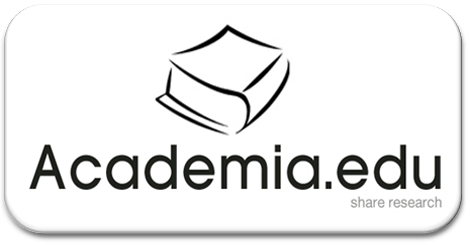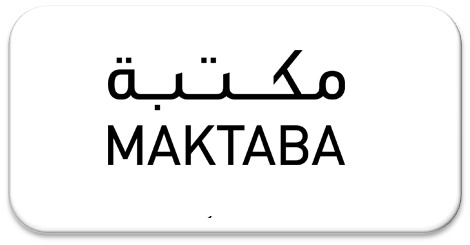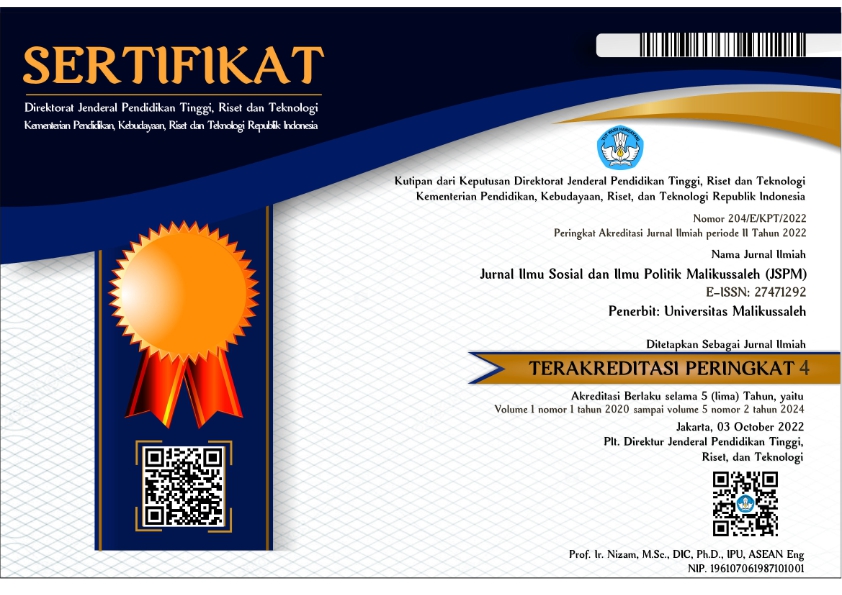Election Dynamics In Indonesia The First Election Era Of 1955
Abstract
General elections are a form of democracy organized by the government for the benefit of the people. With the general election, the people participate in providing their political aspirations which are intended to elect their representatives in the government. The general election is the right step taken by the government to implement the principle of people's sovereignty which has been stated in the provisional constitution. In order to perfect the provisional constitution and to elect representatives to sit in Parliament, the Indonesian government held the first general election in 1955. The type of research used in this research is classified as library research. namely research in which data is processed and extracted from various books, newspapers, magazines and several articles that are related to this research. Then the approach used is a historical approach (historical research). While the method used in the research is a descriptive qualitative research method. The results of the research show that Liberal Democracy in Indonesia was expected from 1950 to 1959, in practice the government system adheres to a parliamentary system. This democracy has a very strong characteristic regarding the multi-party system that is adopted, but there is no political party that has an absolute majority. In this system, the age of the cabinet in each government is very short, causing frequent cabinet changes. At this time the second major achievement after the proclamation was successfully obtained was the achievement of the General Election in 1955 whose participants came from various parties that existed at that time in Indonesia. This election was successfully carried out in two stages, namely the first stage on September 29, 1955 holding the election for the DPR and on December 15, 1955 holding the election for Members of the Constituent Assembly. The top four winners of the 1955 election included: PNI, Masyumi, NU and PKI.
Pemilihan umum merupakan salah satu bentuk demokrasi yang diselenggarakan oleh pemerintah untuk kepentingan rakyat. Dengan adanya pemilihan umum, masyarakat ikut serta memberikan aspirasi politiknya yang dimaksudkan untuk memilih wakil-wakilnya dalam pemerintahan. Pemilihan umum merupakan langkah tepat yang diambil pemerintah untuk melaksanakan prinsip kedaulatan rakyat yang telah tertuang dalam undang-undang dasar sementara. Untuk menyempurnakan konstitusi sementara dan untuk memilih perwakilan untuk duduk di DPR, pemerintah Indonesia mengadakan pemilihan umum pertama pada tahun 1955. Jenis penelitian yang digunakan dalam penelitian ini adalah penelitian kepustakaan. yaitu penelitian yang datanya diolah dan disarikan dari berbagai buku, surat kabar, majalah dan beberapa artikel yang berhubungan dengan penelitian ini. Kemudian pendekatan yang digunakan adalah pendekatan sejarah (historis research). Sedangkan metode yang digunakan dalam penelitian ini adalah metode penelitian deskriptif kualitatif. Hasil penelitian menunjukkan bahwa Demokrasi Liberal di Indonesia berlangsung dari tahun 1950 hingga 1959, dalam prakteknya sistem pemerintahan menganut sistem parlementer. Demokrasi ini memiliki ciri yang sangat kuat mengenai sistem multi partai yang dianut, namun tidak ada partai politik yang memiliki mayoritas mutlak. Dalam sistem ini, umur kabinet di setiap pemerintahan sangat singkat sehingga sering terjadi pergantian kabinet. Pada saat ini prestasi besar kedua setelah proklamasi berhasil diperoleh adalah prestasi Pemilihan Umum tahun 1955 yang pesertanya berasal dari berbagai partai yang ada saat itu di Indonesia. Pemilihan ini berhasil dilaksanakan dalam dua tahap, yaitu tahap pertama pada 29 September 1955 menyelenggarakan pemilihan DPR dan pada 15 Desember 1955 menyelenggarakan pemilihan Anggota Konstituante. Empat besar pemenang pemilu 1955 antara lain: PNI, Masyumi, NU dan PKI.
Keywords
Full Text:
PDFReferences
Ahmad, NR, Wasino, & Wijayat, PA (2019). Campaign of Political Parties Ahead of the 1955 General Election in Semarang City (Case Study of PNI, PKI, Nu, and Masyumi). Journal of Indonesian History , 8 (1) .
Ahmad, TA (2016). Political Campaigns and Battles in Central Java Ahead of the 1955 General Election. Paramita , Vol. 26, No. 1 .
Arestu, TD (2021). The First Form of Democracy in Indonesia. S Journal of Historical Education and Historical Studies of Indang , Vol 3 No. 1 .
Arta, KS (2020). The Liberal Democratic Government System And The Achievement Of The First General Election In 1955 In Indonesia. Journal of Widya Citra , Vol. 1, No. 2, .
Arta, S., & Margi. (2014). History of Indonesia From the Proclamation to the New Order . GrahaIlmu.
Dewantarina, A. (2012). Indonesian National Party in the 1955 General Election in Semarang. Journal of Indonesian History , Vol. 1 (2) .
Fadjar, M. (2013). Election Disputes on Election Results and Democracy: Building Legislative, Presidential and Regional Head Elections & Settlement of Disputes over Election Results Democratically . Press equivalent.
Fatimah, S. (2018). Constitutional Law: Democracy & Election Dynamics in Indonesia . Ierpro Kreasindo.
Labolo, M., & Ilham, T. (2015). Political Parties and the General Election System in Indonesia: Theory, Concepts and Strategic Issues (1st ed.). King Guardian of the Press.
maarif, AS (2006). Islam and Pancasila as the basis of a state study of debates in the constituents . LP3ES Indonesia library.
Mahfud, M. (2017). Legal Politics in Indonesia . Press Eagle.
Meleong, LJ (2010). Qualitative Research Methodology (10th ep.). PT Youth Rosdakarya.
Mohsin, A. (2018). Political Parties and the Democratic System in Indonesia. Populist Journal , Vol. 3 , No. 6 .
Mudjiono, A. (2017). Burhanuddin Harahap Cabinet 1955-1956. Avatara, Historical Education e-Journal , Volume 5, No. 3, .
Nazir, M. (2007). Research Methods, . Indonesian Gilia.
Pakaya, S., & Dali, A. (2021). Democracy and the Party System in Indonesia. At-Tanwir Law Review , Volume 1, Number 1 .
Ultimate, M. (2019). Archive Source Manuscript: Traces of 1955 Election Democracy . National Archives of the Republic of Indonesia.
Poesponegoro, Marwati Djoened, & Notosusanto. (2008). National History of Indonesia VI The Japanese Period and the Age of the Republic of Indonesia (1942-1998) . Library Center.
Purnamawati, E. (2020). The Journey of Democracy in Indonesia. Solution , ISSN Print 0216-9835; ISSN Online 2597-680X , Volume 18 Number 2, .
Ricklefs, MC (2009). History of Modern Indonesia 1200-2008 . Science Porch.
Setiawan, J., Permatasari, WI, & Kumalasari, D. (2018). The Indonesian State Administration System During the Liberal Democracy Period 1950-1959. Historia Journal , Volume 6, Number 2 .
Solikhin, A. (2017). Considering the Importance of Decentralization of Political Parties in Indonesia. Journal of Governance , Volume 2, No. 1 .
Sujati, B. (2020). The dynamics of the Nahdlatul Ulama Party in the 1955 General Election in West Java. Tamaddun: Journal of Islamic History and Culture , Vol. 8 Issues 1 .
Thoha, M. (2014). Political Bureaucracy and General Elections in Indonesia (1st ed.). Prenadamedia Group.
Zulkarnain. (2012). The Road to Strengthening the State The History of Indonesian State Administration . Punjangga Press.
DOI: https://doi.org/10.29103/jspm.v3i1.7220
 Article Metrics
Article Metrics
 Abstract Views : 321 times
Abstract Views : 321 times
Refbacks
- There are currently no refbacks.
Copyright (c) 2022 Ruhdiara Ruhdiara, Agus Junaidi, Siti Fatimah

This work is licensed under a Creative Commons Attribution-ShareAlike 4.0 International License.
INDEXED BY:




.png)









Redaksi Jurnal Ilmu Sosial dan Ilmu Politik Malikussaleh (JSPM): Gedung Fakultas Ilmu Sosial dan Ilmu Politik Universitas Malikussaleh. Kampus Bukit Indah Jln. Sumatera No.8, Kec. Muara Satu Kota Lhokseumawe, Prov. Aceh, Indonesia. eMail: jspm@unimal.ac.id

This work is licensed under a Creative Commons Attribution-NonCommercial-ShareAlike 4.0 International License



.png)



